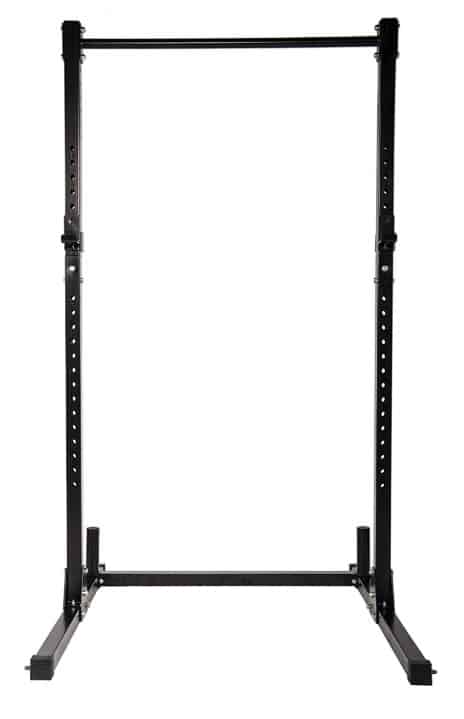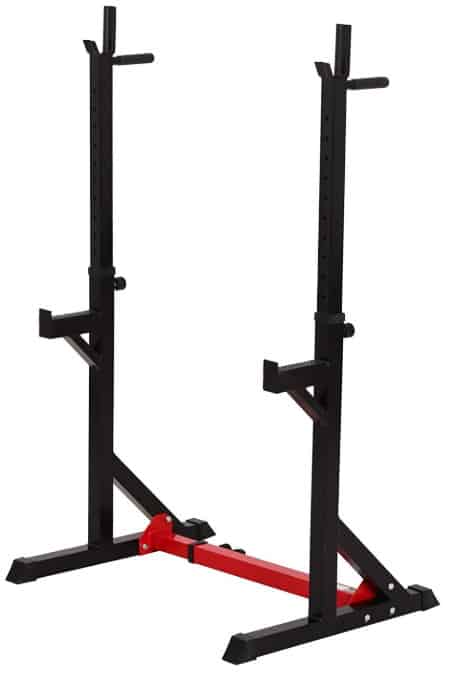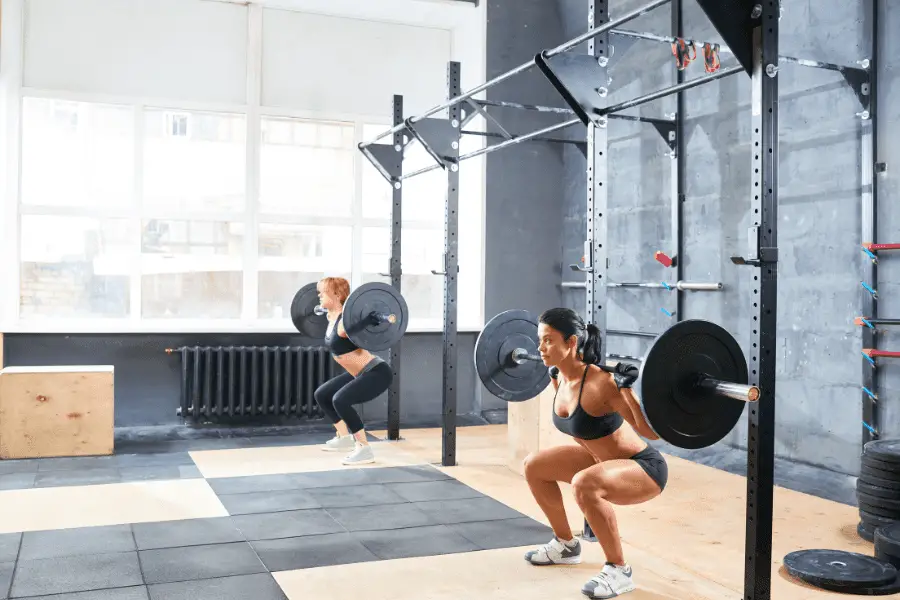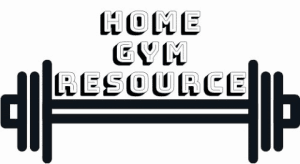What’s the weight limit of the average barbell/squat stand you can find in a home gym? I’ve done some digging and found out what you can expect.
There are two types of barbell stand: fixed and adjustable. Most fixed squat stands have a weight limit of 500 to 1000 lbs. Adjustable squat stands often have a lower load limit ranging from 330 to 550 lbs. Stands with 2″x3″ or 3″x3″ upright posts are significantly stronger than with 2″x2″ posts.
For more details and a list of squat stands and their weight limits, keep reading.
Contents
Squat Stands Weight Limits
Not every squat stand is the same. Let’s take a look at the different models.
| Brand | Model | Type | Height (Max, inch) | Load limit (lbs.) | Rack weight (lbs.) | Upright size (inch) |
|---|---|---|---|---|---|---|
| Titan | X-3 Short | Fixed | 72 | 1000+ | 136 | 3x3 |
| Titan | T-3 V2 | Fixed | 92.5 | 1000+ | 175 | 2x3 |
| Titan | X-3 | Fixed | 92 | 1000+ | 170 | 3x3 |
| Rogue | ES1 2.0 | Fixed | 70.375 | 500+ | 95 | 2x3 |
| Rogue | S4 2.0 | Fixed | 72 | 1000+ | 130 | 2x3 |
| Rogue | S2 2.0 | Fixed | 92 | 1000+ | 146 | 2x3 |
| Rogue | SM-3 | Fixed | 111 | 1000+ | 111 | 3x3 |
| Rogue | SML-3 | Fixed | 110 | 1000 | 167 | 3x3 |
| CAP | Squat stand | Fixed | 85 | 500 | 61 | 2x2 |
| Hulkfit | Squat stand | Fixed | 81 | 500 | 61 | 2x2 |
| Hulkfit | Pro | Fixed | 81 | 800 | 110 | ? |
| Hulkfit | Pro + | Fixed | 85 | 1000 | 120 | ? |
| Doeplex | 2020 multi | Adjustable | 70.1 | 550 | 50.7 | 2x2 |
| Ollieroo | Barbell stand | Adjustable | 64.2 | 480 | 42.6 | 2x2 |
| UBOWAY | Squat stand | Adjustable | 55.1 | 550 | 31.5 | 2x2 |
| Soozier | 2-piece | Adjustable | 64 | 330 | 32.5 | 2x2 |
| Vanswe | Squat stand | Adjustable | 63 | 550 | 52 | 2x2 |
| Merax | Squat stand | Adjustable | 67.5 | 550 | 48.5 | 2x2 |
| York | FTS Press Squat | Adjustable | 61.5 | 156 | 2X3 | |
| Average | 78.38 | 619.09 | 99.77 |
Most squat stands can handle between 500 lbs. to 1000 lbs. The average over the whole list is about 620 pounds. However, averages are not very useful with hard limits. If you want to lift 600 lbs. it doesn’t matter that the average is 620 if your specific stands can only handle 500 lbs.
The load limit is the minimum weight a stand can handle before something gets damaged or worse. That doesn’t mean it’s a good idea to use it to its full potential however. More on that below.
To understand the difference a bit better, it’s good to look at the two different types of squat stand. There are some differences between fixed and adjustable stands.
Suggested post: How much does a squat stand cost?
Fixed barbell stands Load Limits
Fixed squat stands have higher load limits in general. The lowest load limit of any fixed squat stand is 500 lbs. while the highest are 1000 lbs. Manufacturers are a bit cautious with giving hard numbers but they will say the minimum load they can guarantee. Does that mean they can be loaded heavier? Maybe but testing that is completely at your own risk.
So, if you’ve got a fixed stand, you can be reasonably sure that it can handle at least 500 lbs. Many of them can actually support way more than that. So if you intend on lifting heavy, this is the way to go.
Suggested post: How tall is a squat stand?

Adjustable Barbell Stand Weight Limits
Adjustable stands range from 330 lbs. to 550 lbs. That’s clearly much lower than fixed stands. Adjustable stands are inherently less stable than fixed ones since the uprights are made out of two pieces. That is a lot less stable than a single piece. Because the uprights are in two pieces to make them adjustable, they can feel a bit less stable by design.
Adjustable stands are a bit shorter than fixed ones and lack a pull up bar. They are cheap in general however.

Squat Stand Construction Impact On Load Limit
You can see in the chart that there are different types of construction. The biggest difference is the size of the upright posts. Most squat stands and power racks have either 2”x 2”, 2”x 3” or 3” x 3”. Those sizes are important for how much weight a stand can handle.
If you take the same thickness steel and turn it into a small tube, it won’t be as resistant to bending as when you turn it into a larger tube. So even though the thickness is roughly the same (there are some differences between models), the size of the tube is very important to how much weight a squat stand can handle.
Looking at the chart, you can see a pretty clear difference in the tube sizes and their load limits. To get to a load limit of 1000 lbs. you really need 3” x 3” uprights. The stands that have 2” by 2” uprights, only go up to about 500 lbs.
Of course, there are other important factors as well. The upright posts have to transfer the force of the weight to the floor somehow. So the upright posts need to be supported by some kind of brace for stability.
Then, that brace has to be connected to the uprights. This can be welded which is strong but since many of the squat stands are shipped in a box, they have to be bolted together. While it’s pretty easy to make that connection strong enough, it’s still a part of the construction that contributes to the load capacity of the stand.
Finally, there are the J-cups or J-hooks. These are the little hooks you can put the barbell on. These are usually adjustable on the stand or rack. That’s one reason why you need all those little holes in the tubes, this allows you to adjust the height of the hooks to the height you need. This can often be another weak point of a squat stand. Luckily it’s often possible to change the cups that come with the stand for better ones.
Home gym squat stand weight limit
Is there a good weight limit for a home gym squat stand? Less than you lift obviously, but there is a bit more than that.
The load limit indicates how much weight you can put on the J-cups before something gets damaged or worse. However, you probably don’t want to be right on the limit for a few reasons.

Think of it like this; would you prefer to drive 100 mph in a car that has a top speed of 100mph or a car that has a top speed of 200 mph? The second car probably has better brakes, suspension, etc. so it’s much better equipped to handle 100 mph. You can look at stands weight limits in the same way.
Because of all those reasons, I’d recommend getting a stand that can handle at least 30% more weight than you intend to lift.
Also, take into account the strength gains you’ll make in the future. If you’re still progressing, make sure you take future strength gains into account.
For example; you squat 200 lbs. now. However, in 3 years you want to squat 450 lbs.
450 lbs. +30% = 585 lbs. That means you should look for a squat stand with a weight limit that higher than 585 lbs.
For most people, I’d recommend getting a fixed squat rack. They are stronger and sturdier in general and have the added benefit of having a pull-up bar, something you miss on an adjustable stand. Most people who are serious about lifting will keep doing it for a long time.
And while you might never reach the super heavy weights, having strong equipment is never a bad thing. It’ll likely mean it lasts longer. So even if it might cost a bit more to buy, if you look at it on a yearly basis, it probably won’t be much more expensive.
